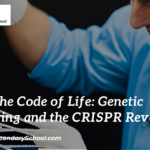Classical Genetics
The history of understanding inheritance, or the passing down of traits from one generation to the next, is a tale woven with curiosity, experimentation, and groundbreaking insights. Classical genetics, also known as Mendelian genetics, represents the foundational framework that unlocked the mysteries of heredity. This article takes you on a journey through the milestones of classical genetics, revealing the pioneering discoveries that paved the way for our modern understanding of genetics.
Gregor Mendel: The Father of Genetics
The story of classical genetics begins with Gregor Mendel, an Augustinian friar and scientist from what is now the Czech Republic. In the mid-19th century, Mendel conducted groundbreaking experiments with pea plants, meticulously crossbreeding them to study inheritance patterns. His work laid the groundwork for the principles of inheritance.
Mendel’s Laws: Unraveling Inheritance Patterns
Mendel’s experiments led him to formulate three fundamental laws that govern the inheritance of traits:
- Law of Segregation: Mendel proposed that each individual possesses two alleles (gene variants) for each trait, inherited from each parent. These alleles segregate during gamete formation, ensuring that each gamete carries only one allele for a given trait.
- Law of Independent Assortment: Mendel observed that alleles for different traits segregate independently during gamete formation. This results in the independent inheritance of traits, leading to diverse combinations of traits in offspring.
- Law of Dominance: Mendel noted that in a pair of contrasting alleles, one allele (dominant) masks the expression of the other allele (recessive) in the phenotype (observable traits).
Extensions and Challenges to Mendelian Genetics
While Mendel’s laws laid the foundation for classical genetics, subsequent discoveries and experiments enriched our understanding:
- Incomplete Dominance: Some traits do not exhibit a clear dominant-recessive relationship. In cases of incomplete dominance, heterozygous individuals display an intermediate phenotype.
- Codominance: In codominance, both alleles in a heterozygous individual are expressed simultaneously, resulting in a distinct phenotype that showcases the contribution of both alleles.
- Pleiotropy: A single gene can influence multiple traits, a phenomenon known as pleiotropy. A single gene mutation can have wide-ranging effects on an organism’s phenotype.
Thomas Hunt Morgan and the Fruit Fly Revolution
In the early 20th century, Thomas Hunt Morgan and his “fly room” team made significant contributions to classical genetics using fruit flies (Drosophila melanogaster). They discovered sex-linked inheritance, demonstrating how certain traits are carried on the sex chromosomes.
Implications for Modern Genetics
Classical genetics provided the groundwork for the field of genetics, but it was just the beginning. With the discovery of DNA’s structure and the elucidation of the genetic code, modern molecular genetics emerged, revealing the molecular basis of heredity and opening new avenues for research, diagnosis, and treatment.
Conclusion
Classical genetics, embodied by Mendel’s pioneering work, ignited a scientific revolution that transformed our understanding of inheritance. From pea plants to fruit flies, the journey of unraveling inheritance patterns has led us to the intricate world of genes and DNA. Classical genetics not only enriched our knowledge of how traits are passed down through generations but also laid the groundwork for the countless discoveries that followed, shaping our modern understanding of genetics and its profound implications for life, health, and evolution.




